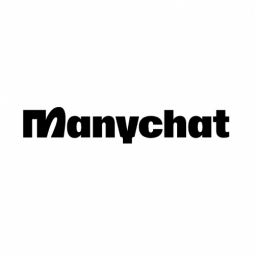Download PDF

ManyChat
Overview
HQ Location
United States
Year Founded
2016
Company Type
Private
Revenue
< $10m
Employees
201 - 1,000
Website
Company Description
Manychat is a leading Chat Marketing platform. We enable businesses to drive more sales and conversions on messaging apps, such as Instagram, WhatsApp, Facebook Messenger, and Telegram, using automation.
IoT Snapshot
ManyChat is a provider of Industrial IoT functional applications, application infrastructure and middleware, networks and connectivity, sensors, robots, analytics and modeling, platform as a service (paas), and infrastructure as a service (iaas) technologies, and also active in the apparel, automotive, buildings, cement, cities and municipalities, consumer goods, e-commerce, education, electronics, equipment and machinery, finance and insurance, food and beverage, glass, healthcare and hospitals, marine and shipping, renewable energy, retail, telecommunications, and transportation industries.
Technologies
Use Cases
Additive Manufacturing
Augmented Reality
Building Automation & Control
Chatbots
Inventory Management
Last Mile Delivery
Leakage & Flood Monitoring
Leasing Finance Automation
Manufacturing Process Simulation
Material Handling Automation
Onsite Human Safety Management
Personnel Tracking & Monitoring
Picking, Sorting & Positioning
Retail Store Automation
Smart Parking
Time Sensitive Networking
Track & Trace of Assets
Traffic Monitoring
Vehicle-to-Infrastructure
Virtual Training
Functional Areas
Industries
Services
Technology Stack
ManyChat’s Technology Stack maps ManyChat’s participation in the functional applications, application infrastructure and middleware, networks and connectivity, sensors, robots, analytics and modeling, platform as a service (paas), and infrastructure as a service (iaas) IoT Technology stack.
-
Devices Layer
-
Edge Layer
-
Cloud Layer
-
Application Layer
-
Supporting Technologies
Technological Capability:
None
Minor
Moderate
Strong
Case Studies.
Case Study
Digital Help's ManyChat Quiz: A Case Study on Subscriber Growth
Catalin Capusan, the Founder and CEO of Digital Help, a leading bot-building agency from Romania, was tasked with creating engaging lead generation sequences for his clients. One of his clients, Pera Novacovici, a Romanian-based psychologist and online coach, had previously worked with another digital ads agency to build an email list of nearly 100,000 subscribers. However, Pera was interested in exploring innovative ways to grow his subscriber list and improve engagement. He had interacted with a bot for Messenger and was intrigued by the potential of such a tool. He approached Catalin with the idea of creating a similar bot for his own use.
Case Study
Revolutionizing Recruitment: Humber River Hospital Doubles Nursing Applications with ManyChat
Humber River Hospital, a major acute care facility in Toronto, Canada, was grappling with a significant challenge - the nursing shortage. The hospital was continually seeking first-rate ICU nursing candidates to staff its facility. However, the traditional recruitment methods, such as job ads on Indeed, were not yielding the desired results. The high competition among other Toronto hospitals made it difficult for Humber River Hospital to stand out with only a text ad. This resulted in a low return on investment (ROI) for its high cost. If the hospital didn't get enough candidates through job boards, they would have to resort to recruitment agencies, which cost an average of $15,000 per hire. The hospital was in dire need of a more cost-effective way to attract and qualify candidates for its internal recruitment agents.
Case Study
Offset Solar's Revenue Boost: A Chatbot Success Story
Offset Solar, a leading home solar installation company in the United States, was facing a challenge in speeding up their sales cycle. Despite having a contact form on their homepage that booked new sales meetings, the company wanted to explore how Chat Marketing could enhance their lead generation process. The goal was to quickly qualify visitors and convert them into leads for sales. Upon analyzing their homepage experience, they identified two major obstacles: visitors either didn't know what they wanted or didn't know how to find it. The challenge was to overcome these obstacles and create a more efficient, customer-focused lead generation strategy.





